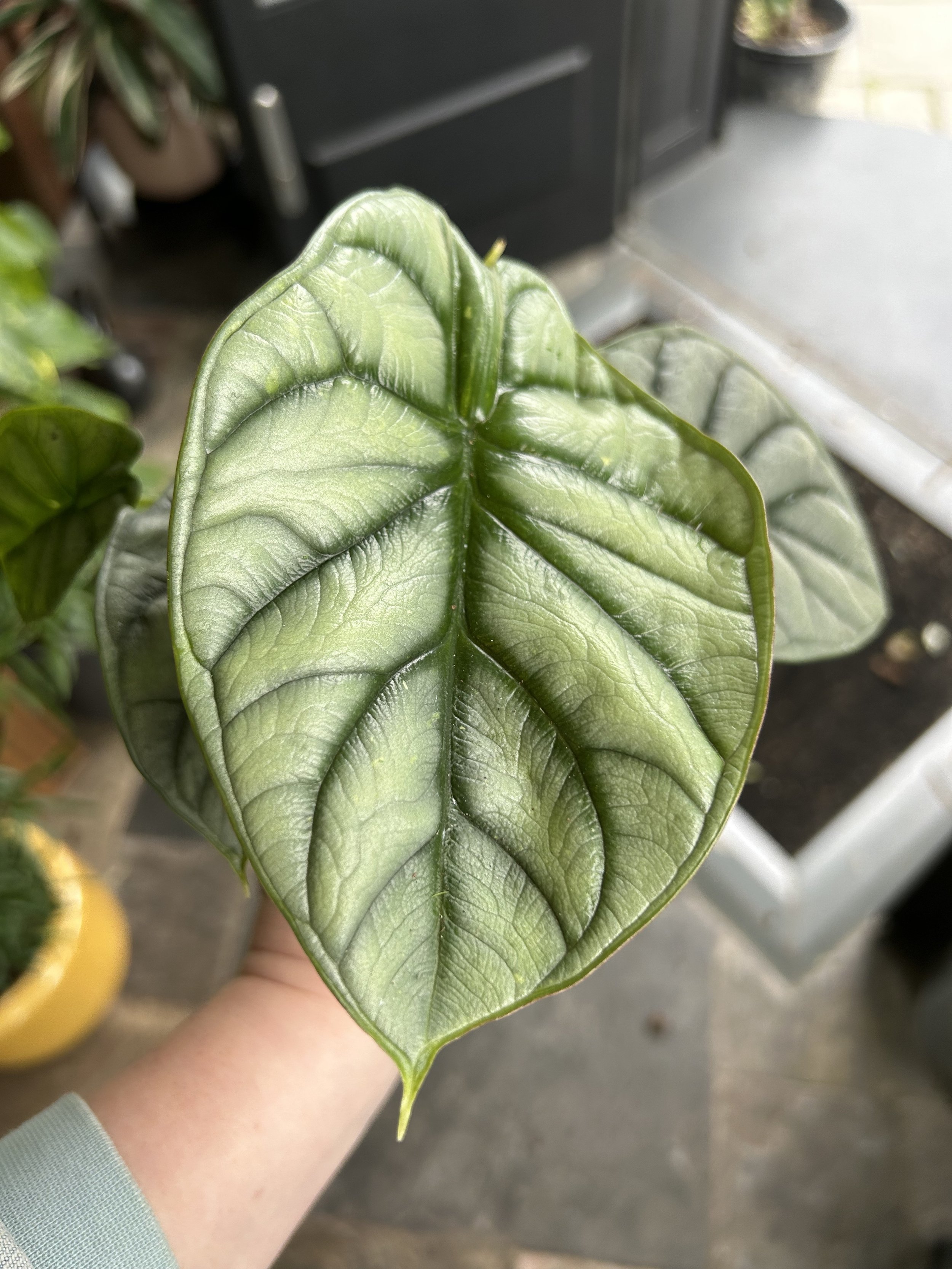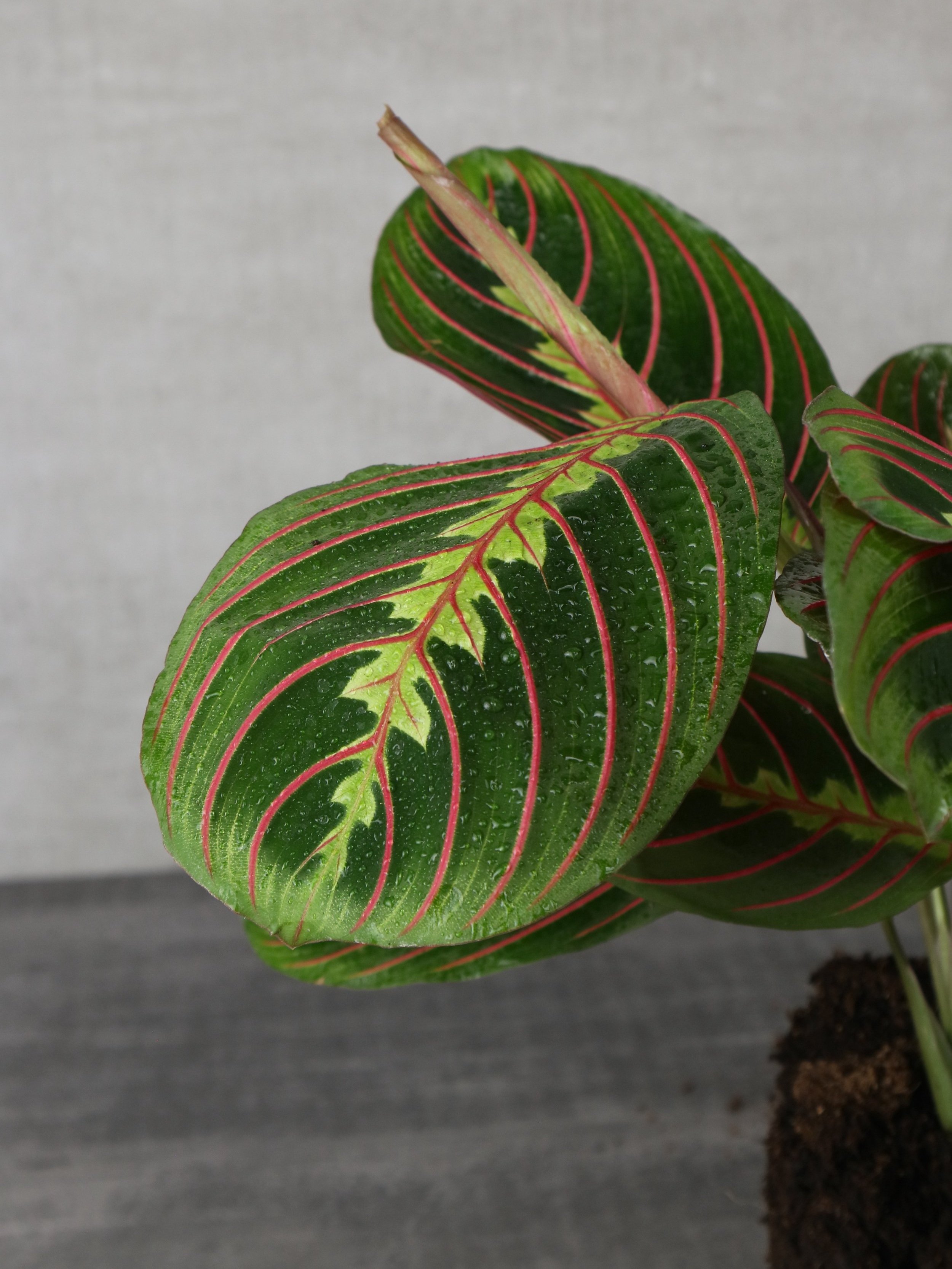Plant Profile
Alocasia Dragon Scale
a.k.a. Alocasia baginda // Silver Dragon
The Dragon Scale Alocasia is native to tropical regions of Southeast Asia and Papua New Guinea. It's a part of the Araceae family, also known as the aroid family, which also includes other popular houseplants like the Monstera and Philodendron.
Top Tips
✔ Keep your Dragon Scale Alocasia out of direct sunlight to avoid damaging its leaves.
✔ Mist frequently to help maintain humidity levels this plant loves, and keep away from drafts.
✔ Keep it slightly moist, but not too wet, and fertilise regularly during the growing season.
Plant Care
-
This beaut likes moderate, indirect sunlight. Too much direct sunlight can damage its leaves, so make sure it's in a well-lit spot but not in direct sunlight.
-
When it comes to watering, the Dragon Scale Alocasia likes to stay consistently moist but not soaking wet. Make sure to water it deeply but allow the top few inches of soil to dry out before watering again. Avoid letting it dry out completely or sitting in standing water, as this can cause root rot.
-
This tropical beast likes humidity - it's used to a rainforest environment after all! Use a pebble tray or a humidifier to help keep the air around it humid. Mist it regularly and try to keep it away from drafty areas.
-
The Dragon Scale Alocasia likes to be fed during the growing season (spring and summer) with a balanced, water-soluble fertilizer every two weeks. Reduce feeding in the winter months.
-
This plant likes to keep warm and cozy. During the summer it prefers temperatures between 65-85°F (18-29°C) and in the winter, temps between 60-75°F (15-24°C).
-
-
To propagate the Dragon Scale Alocasia, take a stem cutting with a few leaves and place it in a well-draining soil mix. Keep the soil moist and the cutting in a warm, humid environment until roots form.
-
When repotting, choose a pot just slightly larger than its current pot. Use a well-draining soil mix and add some perlite or sand to improve drainage. Make sure to loosen any tightly bound roots before planting.



Quick plant check up
Yellow or brown leaves
This could be a sign of underwatering or overwatering. Check to see if the soil is too dry or too wet, and adjust your watering schedule accordingly. If the roots are sitting in water, your plant may have root rot and needs to be repotted in well-draining soil.
Stunted growth
If your Dragon Scale Alocasia isn't growing or the leaves are smaller than usual, it could be a sign that it's not getting enough light. Move it to a brighter location, but avoid direct sunlight as it can burn the leaves.
Wilting leaves
Could be a sign of root rot or pest infestation. Check the roots for any signs of rot and repot in fresh soil if necessary. Look for pests such as spider mites or mealybugs, and address the problem with insecticidal soap or neem oil.





